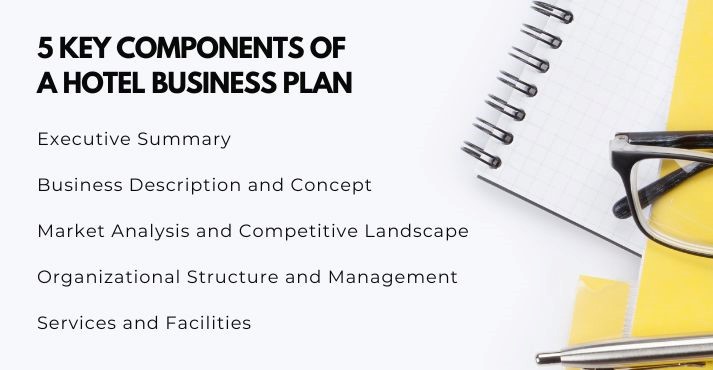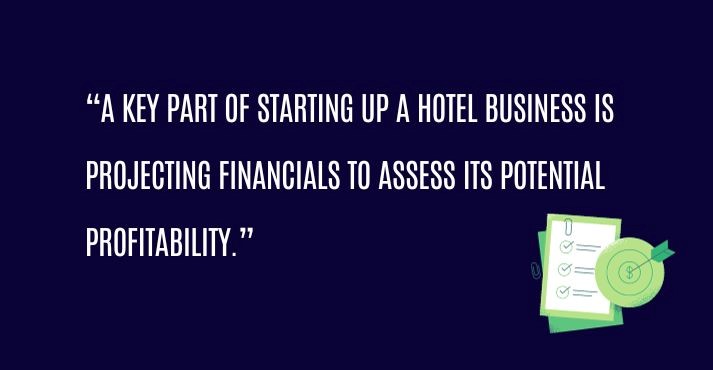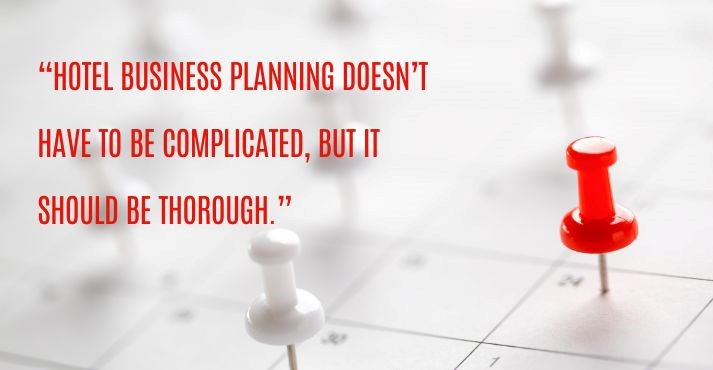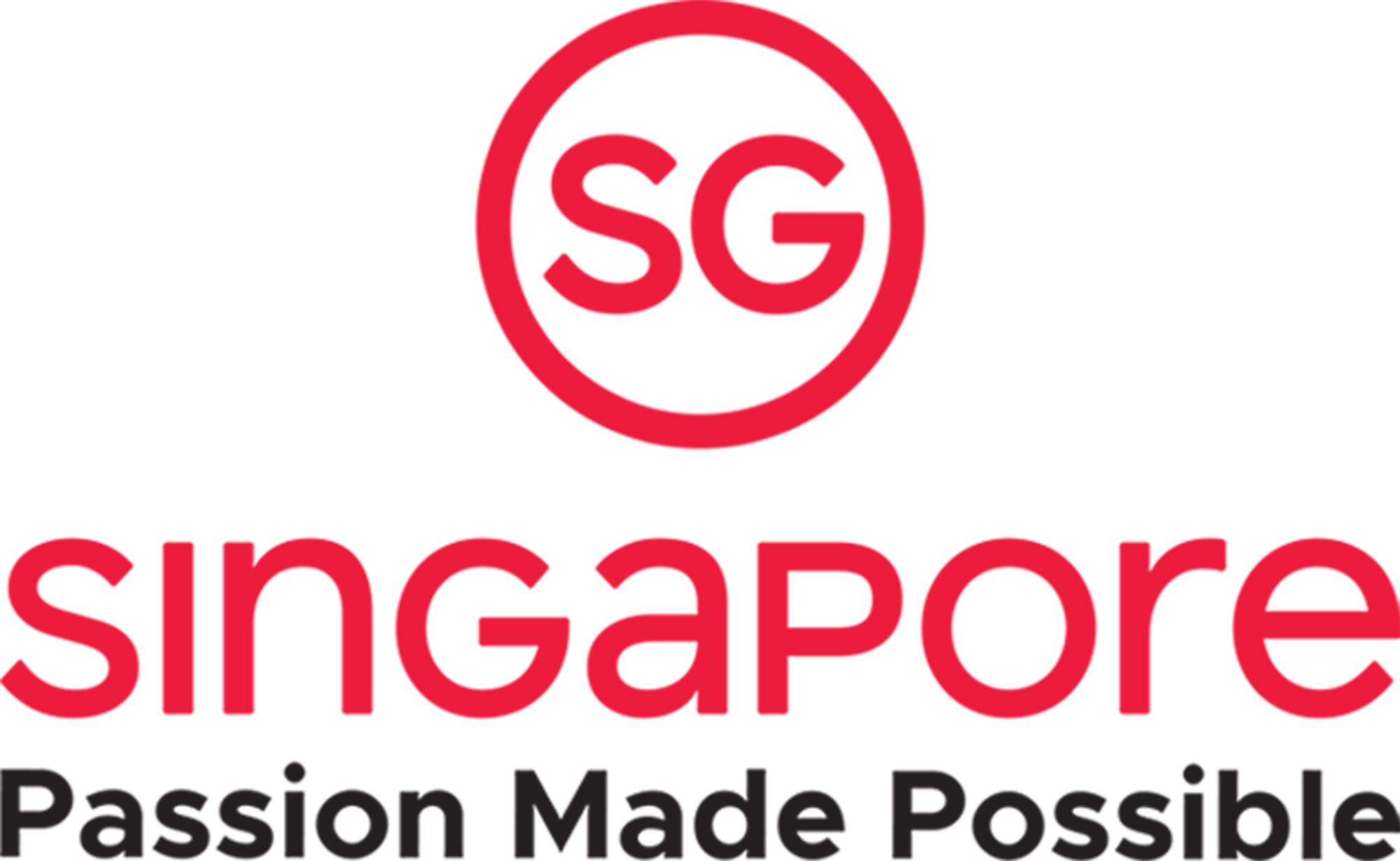Would you build a house without a blueprint?
Probably not, because it could lead to inconvenience and problems.
The same concept is genuine in the corporate world.
It would be best to have a business plan to operate in the hospitality industry. When planning to own or operate a hotel, you must include everything from the project strategy to budgeting and implementation.
As the studies show that the global hospitality industry is expected to grow to 5.8 trillion U.S. dollars in 2027 at a CAGR of 5.5%, a detailed roadmap is what you need to enter the hotel business.
A hotel business plan will keep you on track and help attract investors. Remember, it is a crucial component for planning for success.
Let’s explore the concrete steps to include in your hotel business plan.
The path starts here.
5 Key Components of a Hotel Business Plan

Having a business plan is a no-brainer.
With a solid business plan, attracting investors, staying on track, ensuring workflows are followed, and enabling you to make crucial decisions becomes more accessible.
Let’s explore the critical components of the business plan for a hotel:
1. Executive Summary
An executive summary is a quick and concise part of a business plan that provides a complete roadmap of your hotel business.
A concise business overview encapsulating visionary business goals is a strategic compass, providing a snapshot of a company’s direction and objectives.
It offers stakeholders a quick understanding of the business’s purpose and potential, aiding informed decision-making and fostering alignment with the organization’s vision.
An executive summary should include:
- Business Overview
- Vision statement
- Mission statement
- Business objectives
You must write your executive summary at the final stage of business planning, as it would help you summarize the goals and objectives of your hotel business.
2. Business Description and Concept
A business plan’s business description and concept section should clarify your mission, the goals you are looking to achieve, unique selling points, and a breakdown of shareholder involvement.
In this section, you will outline the full-service hotel’s concept, target market, unique selling points, and overall vision, which is crucial for standing out in the competitive landscape.
The hotel landscape looked very different 20 years ago; today’s market is saturated.
Therefore, defining hotel concepts around the following key elements will help.
- Purpose
- Principles
- People
- Story
- Positioning
Hotel concept must define how your hotel should look like, what services will be offered, how it presents and markets itself the differentiating factors, and how its staff interacts with guests. Providing this information helps establish a clear market position and enhances its chances of success.
3. Market Analysis and Competitive Landscape
A comprehensive market analysis is indispensable in a business plan. It provides vital insights into the target market, industry, competitive landscape, and consumer behavior.
Understanding hotel industry trends enables you to make informed decisions, mitigate risks, and identify market gaps and opportunities. It’s the foundation for a successful and sustainable business strategy.
Take a broad look and analyze industry trends using business models such as SWOT, Porter’s five forces framework, and PESTEL analysis.
- SWOT Analysis
A SWOT analysis will give you an in-depth analysis of the hotel industry’s strengths, weaknesses, opportunities, and threats.
- Porter’s Five Forces Framework
Porter’s five forces framework helps you look beyond direct competitors when assessing strategy and, instead, consider broader environmental forces. It is best for in-depth competitor assessment and helps create a stand-out USP.
- PESTEL Analysis
PESTEL is an acronym for political, economic, social, technological, legal, and environmental. It gives a bird’s eye view of the whole environment from many different angles that one wants to check and keep track of while contemplating a business plan.
A thorough analysis can help solidify your competitive advantage and develop a contingency plan for how you will deal with your weaknesses and threats.
4. Organizational Structure and Management
An organizational structure is an integral part of the business plan as it provides an overview of the hotel’s management roles according to job responsibility and ranking.
Organizational structure enables quick decision-making, better coordination, and employee communication, enhancing productivity. It ensures the proper functioning of an organization by establishing its chain of command and workflow.
While structuring your hotel team, there are different types of organizational structures that you can choose from:
- Hierarchical
- Flat
- Flatarchy
- Functional
- Divisional
- Matrix
Management operational expertise is essential to ensure that each department carries out its goals to the best ability possible and handles any roadblocks that may stand in the way of business.
Let’s look at what management hierarchy looks like, practically speaking.
- Business owner
- General manager
- Assistant managers
- Department managers
- Operations staff
Detail your short and long-term operational plans and the stakeholders involved for each area. Mention efficient management practices that will help you make better strategic decisions relating to resources and make it easier to scale up your hotel business.
5. Services and Facilities
In this business plan section, you must mention all your hotel services, facilities, and guest offerings. Meeting guest expectations should be at the core of your hotel business plan.
You can enhance its appeal to potential investors and define the guest’s journey by showcasing services and facilities to meet diverse guest needs. Moreover, by outlining the services and facilities, the hotel can create a unique selling proposition and tailor its marketing efforts accordingly.
Here’s a list of standard services and facilities you can find in many hotels:
- Accommodation
- Front Desk Services
- Dining
- Meeting and Event Facilities
- Recreational Facilities
- Business Services.
- Housekeeping
- Security
- Transportation Services
- Entertainment
- Concierge Services
- Childcare Services
- Pet-Friendly Services
- Special Needs Accessibility
- Luggage Storage
- Laundry and Dry Cleaning
- Room Amenities
- Spa and Wellness Services
- Gift Shops
- Emergency Services
- Wi-Fi and Internet Access
All the quality hotel amenities, services, and facilities must be mentioned in your business plan and aligned with the preferences of your target market.
Financial Projections and Funding
Establishing financial projections and identifying funding requirements and sources is fundamental to planning. They provide a roadmap for the hotel’s financial future, outlining revenue expectations, expense estimates, and profit projections.
Additionally, it offers a clear understanding of the return on investment potential, mitigating financial risks and ensuring sound financial planning for the hotel’s success and long-term sustainability.

Revenue Projections and Budgeting
Revenue projections and budgeting are essential for assessing the business’s viability, attracting investors or securing loans, and demonstrating a well-thought-out financial strategy.
Understanding the financial feasibility of the hotel business is essential to reduce or manage your business risk.
In this section, you should include the following:
- Revenue Projections
- Expense Projections
- Profit and Loss Statements
- Cash Flow Projections
- Financial Statement
- Break-Even Analysis
- Funding Requirements
- Use of Funds
- Funding Sources
- Return on Investment (ROI)
- Financial Assumptions
- Financial Contingency Plan
- Debt Repayment Plan
- Sensitivity Analysis
Financial forecasting based on sustainable budget practices will help you to decide whether a project or an investment is worthwhile by looking at its value and the minimum yield it generates. It
Funding Requirements and Investment Plan
Having an investment plan before starting the hotel business will provide a clear financial requirements roadmap, ensuring adequate capital for startup and improving ongoing operations.
Attracting investors and lenders becomes more accessible with a solid funding and investment plan, as it demonstrates financial preparedness to the investors and lenders.
Here’s how you can structure this section in your business plan:
- Funding Requirements
- Startup Capital
- Working Capita
- Sources of Funding
- Equity Investment
- Loans
- Grants and Subsidies
- Potential Returns for Investors
- ROI Projections
- Dividends
- Exit Strategy
- Risk Mitigation
- Legal and Contractual Agreements
Securing hotel funding and attracting investments for your hotel becomes more accessible with a clear and well-structured plan. It instills confidence and makes your home business more attractive and feasible.
Risk Analysis and Mitigation
A Proactive approach to risk analysis and mitigation helps you develop contingency plans.
It helps mitigate operational, financial, and reputational threats, ensuring the safety and satisfaction of guests, protecting investments, and maintaining business continuity, ultimately supporting long-term profitability and success in a competitive industry.
Addressing risk mitigation strategies in the plan is crucial in creating a resilient and sustainable business model in the competitive and ever-evolving hotel industry.
To manage risks in the hotel business, you can implement the following strategies:
- Risk avoidance – For example, you may face a risk where you won’t be able to serve the customers on time due to a lack of staff. To avoid this risk, you could hire the correct number of staff in case of a seasonal rush at the hotel.
- Risk reduction – For example, you can’t serve an essential ingredient for your dish at your hotel due to seasonality issues. To avoid this risk, you must ensure inventory management practices and have connections with multiple suppliers.
- Risk transfer – For example, if you don’t have the expertise to maintain social media, you are at a loss for online opportunities. You can outsource digital marketing to an expert agency to avoid this risk.
- Risk control – For example, if you cannot achieve a certain staff performance level. To avoid this risk, you can provide on-site training and development.
The hotel business plan is committed to safeguarding investments and ensuring guest safety and satisfaction by identifying and assessing potential risks.
It also reassures investors, lenders, and stakeholders that the hotel is well-prepared to navigate unforeseen circumstances, enhancing confidence in the project’s viability.
Implementation Plan and Milestones
A strategy implementation plan is a detailed roadmap that clearly defines the steps and activities required to execute the strategy effectively.
In this section, you must present a breakdown of tasks into identifiable steps, assign tasks and responsibilities to the people involved, and create a definitive timeline for the entire project.

Operational Plan
An operational plan outlines the steps to achieve your hotel business objectives. It is helpful for investors and your employees because it pushes you to think about tactics and deadlines.
Your operations plan should be able to answer the following:
- Who – The person or departments in charge of completing specific tasks.
- What – A description of what each department is responsible for.
- Where – The information on where daily operations will be taking place.
- When –The deadlines for when the tasks and goals are to be completed.
- How much – The cost amount each department needs to complete their tasks
When creating your operational plan, consider all the activities that will help implement hotel operations, ensuring service excellence. Make sure your strategic objectives are in place and relevant.
Below is the list of the day-to-day operation plan for service delivery.
- Reception and Guest Services
- Housekeeping
- Food and Beverage Services
- Maintenance and Engineering
- Accounting and Finance
- Sales and Marketing
- Security
- Reservations and Front Desk
- Health and Safety
- Guest Relations and Services
- Room Reservations and Inventory
- Procurement and Supplies
- Efficient Staffing
Marketing and Promotion Strategy
Marketing strategy and promotion plans help hotel reach their target audience, build brand awareness, and drive sales. With it, a company may be able to compete, gain visibility, or achieve growth goals.
A well-defined marketing and promotion strategy is pivotal for revenue growth, profitability, and long-term success, ensuring that the hotel stands out and thrives in the hospitality sector.
Hotels increasingly embrace moral marketing, prioritizing sustainability, social responsibility, and ethical practices to connect with conscious consumers and create a positive impact. Include this in your business plan to manage the costs associated with green initiatives, ethical sourcing, social responsibility, and marketing to prioritize moral marketing and sustainability.
As a hotel business owner, online and offline marketing strategies must align with the hotel’s overall objectives and goals, enabling the hotel to achieve the desired operational efficiencies.
Online marketing and promotion strategies for the hotel business include:
- Search Engine Optimization (SEO)
- Pay-Per-Click Advertising (PPC)
- Social Media Marketing
- Email Marketing
- Online Travel Agencies (OTAs)
- Content Marketing
- Influencer Marketing
- Online Review Management
Offline promotion initiatives for guest attraction used by hotel business include:
- Local Event Sponsorship
- Print Advertising
- Direct Mail Marketing
- Travel Trade Shows
- Networking with Local Businesses
- Billboards and Signage
Promoting your hotel business will help you reach potential guests and give them a reason to choose your hotel over the competition, thanks to your unique value proposition.
Milestones and Key Performance Indicators (KPIs)
Setting milestones and key performance indicators helps hotel businesses stay on track and focused on achieving goals. These measurements enable informed decision-making, highlight areas that require improvement, and can be instrumental in adapting strategies to market trends.
Milestones and KPIs ensure goal tracking and enable accountability and efficiency, contributing to the overall success and sustainability of the hotel business.
Following are the ways to set milestones for your hotel business:
- Revenue Growth Targets
- Occupancy Rate Goals
- Customer Satisfaction Improvements
- Expansion and Renovation Milestones
- Marketing and Advertising Milestones
- Staff Training and Development Benchmarks
- Sustainability and Green Initiatives Targets
Once you’ve identified the milestones for hotel business performance, you can define key metrics to analyze the outcomes.
Critical metrics for tracking hotel performance:
- Occupancy Rate
- Average Daily Rate (ADR)
- Revenue per Available Room (RevPAR)
- Gross Operating Profit per Available Room (GOPPAR)
- Customer Satisfaction Scores
- Direct Booking Percentage
- Return on Investment (ROI)
Conclusion
Now, as we navigate the hotel business plan, this outline will be the compass that guides your venture toward success.
Conclusion on business plan creation showcases that your vision and strategies will serve as a tool to instill confidence in investors.
This meticulous planning, coupled with your commitment, inspires investor confidence and secures the necessary support for turning your hotel dream into a prosperous reality.
Maximize your hotel business by leveraging this dynamic plan to achieve your goals.













